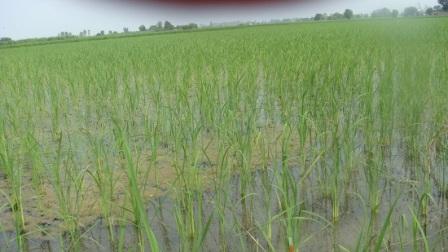/regions/political
Political
Palak Dil Lake - Mizoram
Posted on 26 Nov, 2010 03:00 PMThe Mizoram state has three types of (natural) lakes: valley lakes, tectonic/landslide lakes and artificial reservoirs, but the only lake of significance is Palak Dil, which is a natural lake in a depression in the hills. Palak Dil may possibly be a combination of valley and tectonic lakes. Locally in Mizoram, lakes are called dils. There are many such dils scattered all over the state, but they are tiny pools or marshy depressions such as Rengdil, Tamdil and Mampui Dil (Choudhury 2002). The Palak Lake is situated within the Mara Autonomous district Council, which is a region inhabited by the Mara Tribe. The Maras are distinct from the majority Mizos and in the Mara language the Palak Lake is referred to as Pala Tipa.
Droplets: e-newsletter from Everything About Water - November 2010
Posted on 26 Nov, 2010 02:02 PMArticle and Image Courtesy: Everything About Water
The November edition of Droplets e-newsletter published by the Everything About Water had the following highlights:
- India: The country facing a water deficit of 50% by 2030
- India: New national water policy in pipeline
- Rajasthan: Rs. 149.59 crore plant to clean river waters
- Madhya Pradesh: State to sign 6 MoUs for water projects
- Tamil Nadu: Habitat for Humanity brings clean drinking water
- Mumbai: MMRDA plans Rs. 1200 crore water conveyance system plan
Workshop cum training programme on organic terrace gardening, VIttal Mallaya Scientific Research Foundation, 18th Dec 2010, Bangalore
Posted on 26 Nov, 2010 12:20 PMEvery individual will have an instinct gene to love nature and plants. That encourages having greeneries around, that forces to show concerns for environment and ecology and that urges to look for safe and functional vegetables, fruits and so on. Sometimes, this gene gets masked by certain extraneous factors which need to be unmasked to draw everyone’s attention.
Fluorosis water contamination in rural India - A video by Earth Report
Posted on 26 Nov, 2010 12:08 PMVideo Courtesy: EarthReport
Source: 5min Media
It has been proved that it's a direct result of drinking ground water that's contaminated with high levels of fluoride. This video suggests that rainwater is the best source of water for communities living in these regions.
Direct seeding of rice A simple solution to India s water crisis?
Posted on 26 Nov, 2010 11:57 AMIn partnership with the Columbia Water Center, researchers from Punjab Agricultural University have initiated a multi-year project to implement and field-test diverse water-saving technologies, practices and policies aimed at reducing agricultural water use in the state of Punjab, particularly among rice farmers. In last year’s trial, the most successful project involved the installation of inexpensive tensiometers in the fields of over 500 farmers, yielding water savings of 30-35 percent.
Concurrently with the tensiometer trials, the team also recruited a smaller number of farmers to adopt a different way of cultivating rice altogether: Direct seeding of rice.
In traditional rice cultivation, rice is sprouted in a nursery; sprouted seedlings are then transplanted into standing water. With direct seeding, rice seed is sown and sprouted directly into the field, eliminating the laborious process of planting seedlings by hand and greatly reducing the crop’s water requirements.
 Conventional rice production requires standing water
Conventional rice production requires standing water
Seasonal changes in Indian aerosols: Updates from Earth Observatory
Posted on 25 Nov, 2010 12:49 PMIn recent years, scientists have detected very high levels of aerosol pollution in the air over India. Some of it is the result of industrial and agricultural activity, and some of it is nature at work.
News roundup (16-22 November 2010)
Posted on 24 Nov, 2010 10:07 PMSanitation/Wastewater
- India tops the list of nations lacking toilets
- India hunts for a Rural Toilet Design, 1000 Euros up for grabs
- 82% of rural India deprived of three basic necessities of life — tapped drinking water, electricity connection and sanitation
- There are 700 million cell phone connections in India, but only half this number of Indians have access to private toilets, says a UN study
Maintenance and monitoring of rainwater harvesting structures, CSE, New Delhi
Posted on 24 Nov, 2010 03:03 PMOrganizer: Centre for Science and Environment (CSE)
Training Programmes for Public Health Engineering Department (PHED) Engineers
Posted on 23 Nov, 2010 04:51 PMContent and Image Courtesy: Centre for Science and Environment (CSE)
Compliance and monitoring of centralised wastewater treatment plants and the role of decentralised wastewater management, CSE, New Delhi
Posted on 23 Nov, 2010 04:22 PMOrganizer: Centre for Science and Environment (CSE)